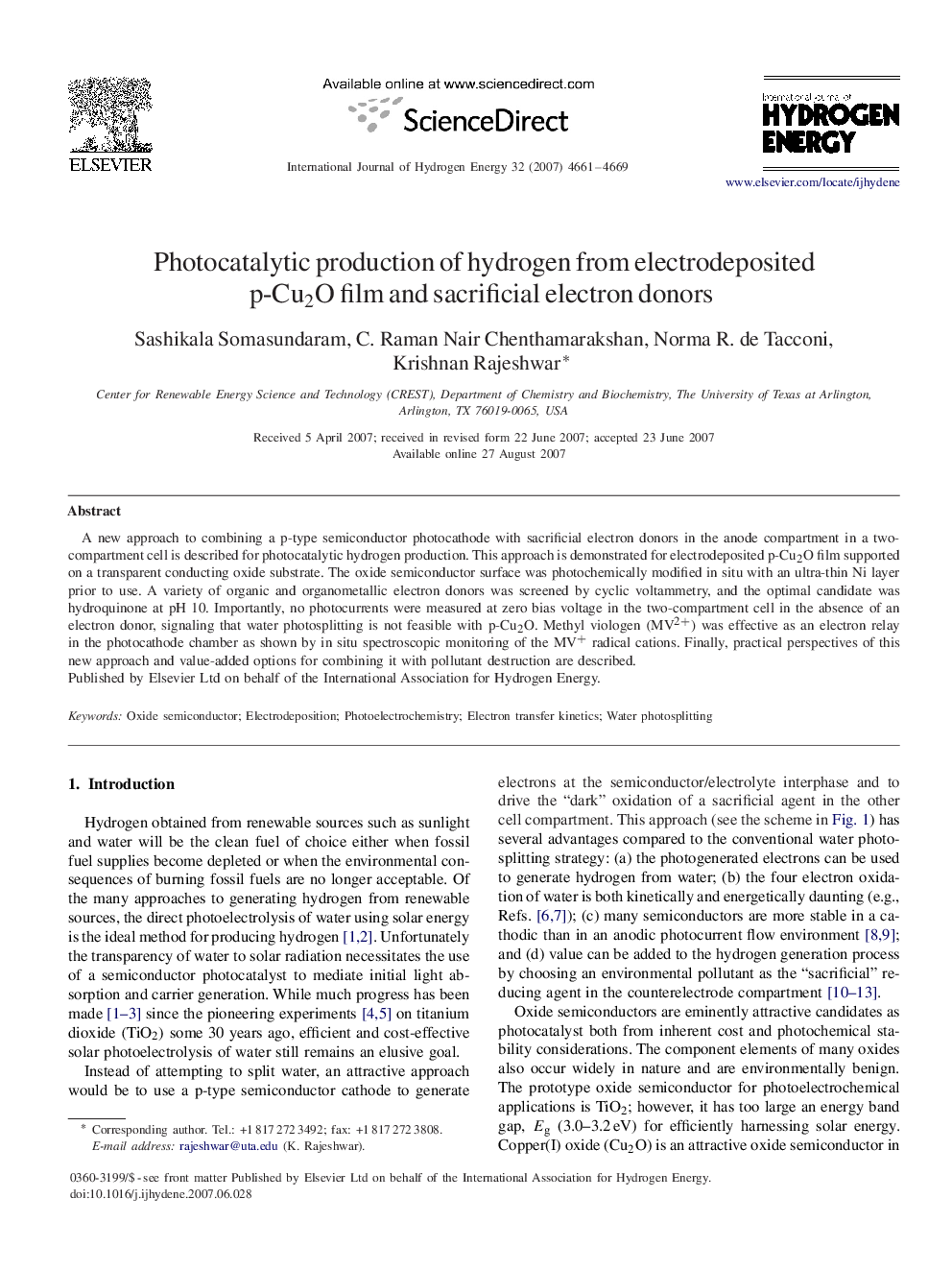| Article ID | Journal | Published Year | Pages | File Type |
|---|---|---|---|---|
| 1283752 | International Journal of Hydrogen Energy | 2007 | 9 Pages |
A new approach to combining a p-type semiconductor photocathode with sacrificial electron donors in the anode compartment in a two-compartment cell is described for photocatalytic hydrogen production. This approach is demonstrated for electrodeposited p-Cu2Op-Cu2O film supported on a transparent conducting oxide substrate. The oxide semiconductor surface was photochemically modified in situ with an ultra-thin Ni layer prior to use. A variety of organic and organometallic electron donors was screened by cyclic voltammetry, and the optimal candidate was hydroquinone at pH 10. Importantly, no photocurrents were measured at zero bias voltage in the two-compartment cell in the absence of an electron donor, signaling that water photosplitting is not feasible with p-Cu2Op-Cu2O. Methyl viologen (MV2+)(MV2+) was effective as an electron relay in the photocathode chamber as shown by in situ spectroscopic monitoring of the MV+MV+ radical cations. Finally, practical perspectives of this new approach and value-added options for combining it with pollutant destruction are described.
